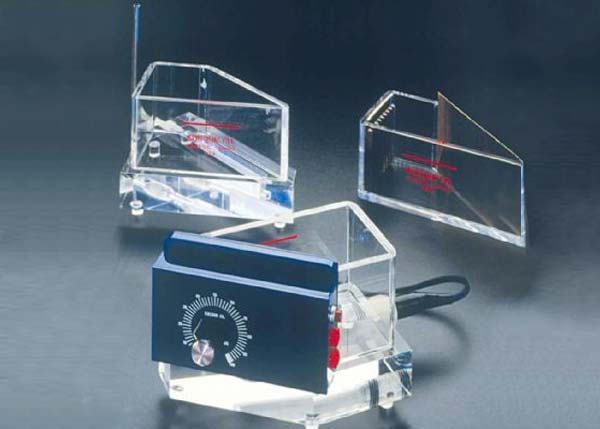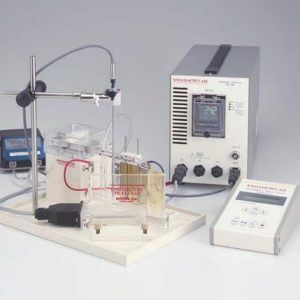A Hull Cell or Lucite Hull Cell is a testing tool, or a miniature electroplating cell, in which an electroplating solution is evaluated across the range of operating conditions. An evaluation of the deposit on the cathode across a range of current densities is useful in demonstrating the capabilities of a plating bath solution.
Most platers use a Hull cell to find out what is wrong when a plating station begins to produce rejects. But Hull cells can do far more than help to get you out of trouble. Properly used, they can prevent problems. You can use them in routine daily maintenance, establishing operating parameters, and in considering modifications or improvements of a plating process.
Because a Hull cell produces a deposit that is a true reproduction of the electroplate obtained at various current densities within the operating range of a particular system, it allows experienced operators to determine multiple process parameters, including:
- Approximate bright range.
- Approximate concentration of primary bath components, such as metal and electrolyte.
- Approximate concentration of addition agents.
- Presence or absence of metallic and organic impurities.
- “Covering power”—the lowest current density at which plate is deposited.
- “Throwing power”—metal distribution.
- Effects of temperature variations.
- Effects of pH variations.
The Hull cell or Lucite Hull Cell is a time saver. Hull-cell panels are inexpensive when compared with experimenting in a production tank plating actual parts. You can introduce variables quickly and safely in the small tank represented by the cell. And you can see the results of several different tests at the same time.
The cell holds 267 ml of plating solution. At that volume, there are direct correlations of milliliter or gram additions to 100 gal of plating solution, without the need for a math degree. A 2-g or 2-ml addition to the 267-ml cell equal an addition of 1 oz/gal in your operating bath.




